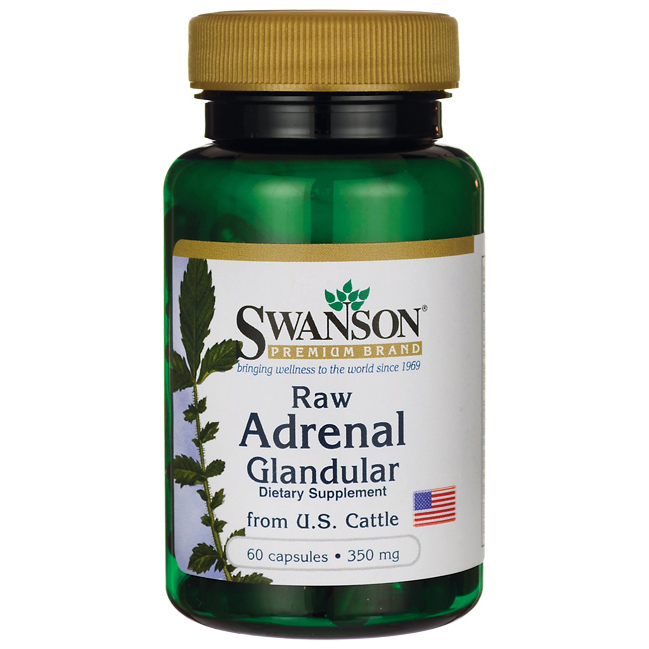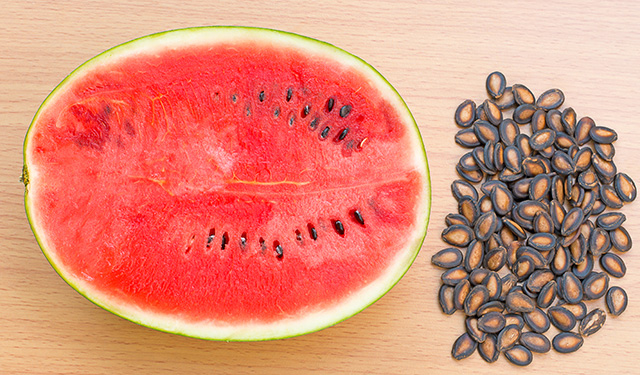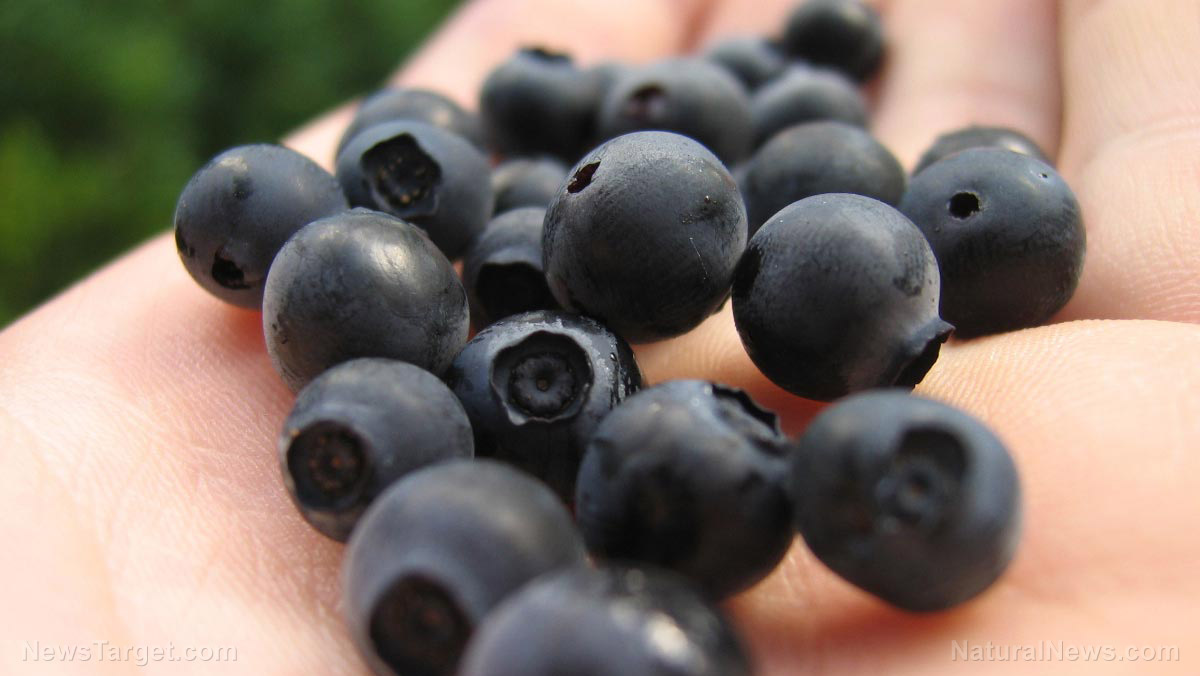Are glandulars your way to a bigger, more powerful body?
06/16/2016 / By usafeaturesmedia

(MensFitnessFocus.com) I’d like to say a few hundred words about glandulars. That’s right – glandulars. They’re making a comeback.
Now that steroids are getting major attention from local and national law enforcement, many health enthusiasts are pushing glandulars again. Not long ago I noticed at least five major publications carrying full-page ads attesting to the magnificent benefits that can be derived from ingesting glandulars.
Actually, glandulars were really hot in the late 70’s and early 80’s. At that time, I really wasn’t into nutrition, but I had been told two or three times by individuals who were supposedly ‘in the know’ that a normal, well-fed human being could never be improved upon by any type of nutritional supplement. I had also read a great deal of research concerning nutrition, all of which clearly indicated that such supplements as vitamins, amino acids and food supplements were worthless as ergogenic aids. Consequently, nutrition to me meant coke, cheeseburgers, pies and pizzas. Still, the talk about glandulars had me wondering.
You see, there were so many bodybuilders running around saying that to be successful you had to take glandulars, that I wondered if the substance might not be worth an investigation. I went out and caught one of those bodybuilders to find out what glandulars were all about. Surprisingly, all he knew about glandulars was that to be successful, you had to take them. The funny thing was that I ran down just about every one of those glandular-promoting bodybuilders and not a single one of them could explain how glandulars worked. In fact, the only thing they could say was that they worked as good, if not better, than steroids. Now that’s saying something. However, rather than accepting the claimed ergogenic effects of glandulars as the product of some type of sympathetic magic, I decided to research the matter myself. What I found was quite interesting.
Simply stated, glandular therapy is the use of glandular and organ substances to enhance the functions of an individual’s organs and glands. The key concept behind this theory is that like cells help like cells. For instance, this theory holds that if you eat liver, your own liver will be improved. The logic is that glandular tissue contains intrinsic factors that are distinct from vitamins, minerals, hormones, or enzymes, and that these intrinsic factors are cell specific – meaning that the cells we eat will specifically affect like cells in our body. In simpler terms, if you want to improve the activity of a particular gland, eat that particular gland. If you want a highly active brain, eat brain tissue. Demented, but that’s what this theory says.
As the Worm Turns
During my research, I actually found a laboratory study that seemed to indicate that very possibility. In 1960, Reva Kimble, Barbara Humphries, and James McConnell conducted an experiment to see if they could transfer intelligence from one planarian (flatworm) to another. The first thing they done were to condition the flatworm to respond to light. They put a bunch of flatworms into a trough of water and then passed an electrical current through the water. Of course, the flatworms contracted violently, as would most animals who received such a shock. In this case, the shock is an unconditioned stimulus (UCS) and the contracting of the worms is the unconditioned response (UCR). In other words, the worms didn’t have to learn to contract when they were shocked. What the researches wanted to do, was to condition the worms to contract when they saw the light without the shock being present.
No big deal. They simply paired the shock with the light just like Pavlov paired the bell with food. After a number of trials of pairing the light with the shock, the worms eventually developed an association reflex between the light and the contracting response. The worms had learned to contract when they saw the light, even though the shock wasn’t given. The light had become a conditioned stimulus (CS) and the contracting, a conditioned response (CR). Once the researches had conditioned the planarians to the light, they chopped them into little bits and fed them to untrained flatworms.
Another group of flatworms were fed bits of other flatworms that were not conditioned to the light. As it turned out, the planarians that had eaten the conditioned worms responded to the light (CS), while the planarians who ate the unconditioned worms didn’t respond to the light. It seems that the intelligence of the flatworms had been enhanced by eating their educated kin. I also found that when flatworms are injected with the RNA from donor worms who were taught wrong information, the worms still learned related material faster than other worms that were given injections of RNA from uneducated donors. According to this, negative information is better than no information.
Conflicting Tendencies
Perhaps the most amazing study involved flatworms that were fed both positive and negative instruction. The planarians were given a worm stew made up of some donors who were trained to do the same thing in exactly the opposite way. Those poor worms learned slowest of all. The conflicting behavioral tendencies they received made learning more difficult than if they had received no instruction at all. They showed their conflict not only by learning slowly, but they were unable to make up their minds. Often their indecision was so great that they simply refused to learn any new material. I guess this means that you’re not what you eat, but rather who you eat, or if you’re going to eat someone’s brain, make sure it has all the answers.
Now I am sure you’re asking yourself, what if I ate an animal’s brain? Would I act like an animal? Well, try it – what have you got to lose? On a more serious note, it is believed by glandular theorists that cellular factors are not species specific, but rather organ specific. This means that you don’t have to eat a human brain to enhance your own brain – any brain will do. For instance, if you ate a monkey’s brain, your brain will benefit. It sounds like it should be the opposite way, doesn’t it? According to theory, although we are far more advanced than other animals, concentrates of animal brain tissue supposedly contain intrinsic factors that would improve our own brain chemistry.
Apparently most bodybuilders aren’t interested in developing their minds, because most of the glandulars they consume are ones that will supposedly give them an anabolic effect by boosting the body’s production of hormones. For instance, the organs and glands they usually consume are liver, thymus, heart, kidney, lung, pituitary, adrenal, prostate, pancreas and hypothalamus.
The question is – do they really work? Would this hormone production increase strength and other physiological functions? I don’t know, nor does anyone else. First of all, it has never been scientifically proven that glandular tissue concentrates can enhance organ and gland activities in any other way than by their vitamin, mineral and protein content. In fact, the intrinsic factors that are supposedly contained in raw glandular tissue, and which are supposedly distinct from vitamins, minerals, hormones or enzymes, have never been identified. Of course, that doesn’t mean that these intrinsic factors do not exist. Remember, vitamins were believed to exist at least three decades before they were finally identified.
Not Organ Specific?
Another point is that no research substantiates the theory that glandulars are organ specific. It has never been shown that the raw cellular material of a bovine liver will enhance the liver of a human being in any way other than its nutritional content. Although the worm studies seemed to support the glandular theory, they lacked considerable methodological control. Thus the results of these studies must be interpreted with caution. There’s also the fact that you’re not a worm, literally speaking anyway.
We are more evolutionarily evolved than a simple flatworm. To make an inference from a flatworm to a human being would be, at best, ridiculous. Not only that, these studies were not designed to answer the question of whether cellular factors are species specific, organ specific, or both.
Though glandulars may be making a comeback as far as promotion and sales, there’s still no research to indicate that they are truly ergogenic.
By Sandra Prior, Expert Articles.
More:
- Go Heavy, Go Often: 5 Top Reasons For Increasing How Much You Lift
- 5 Tips To Increasing Your Bench Press
- Ramp Up Your Human Growth Hormone With This Alternating Fitness Routine
MensFitnessFocus.com is part of the USA Features Media network. Check out ALL our daily headlines here.
Tagged Under: glandulars, muscle growth




















